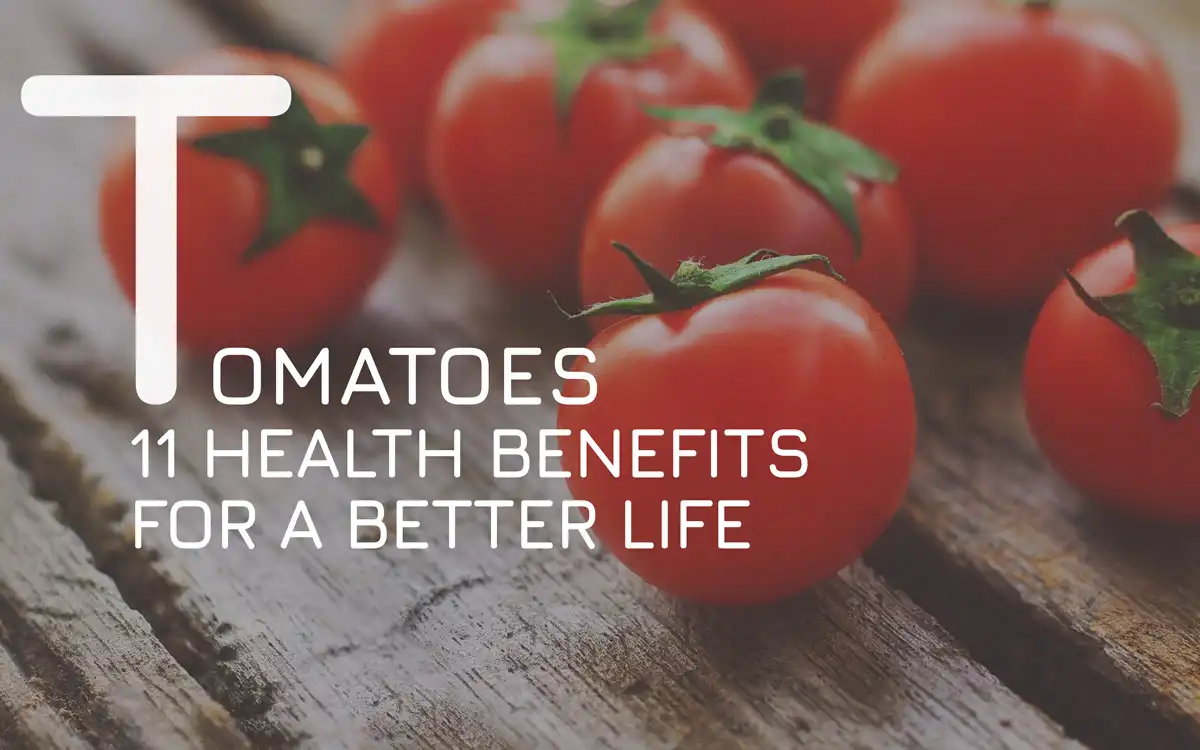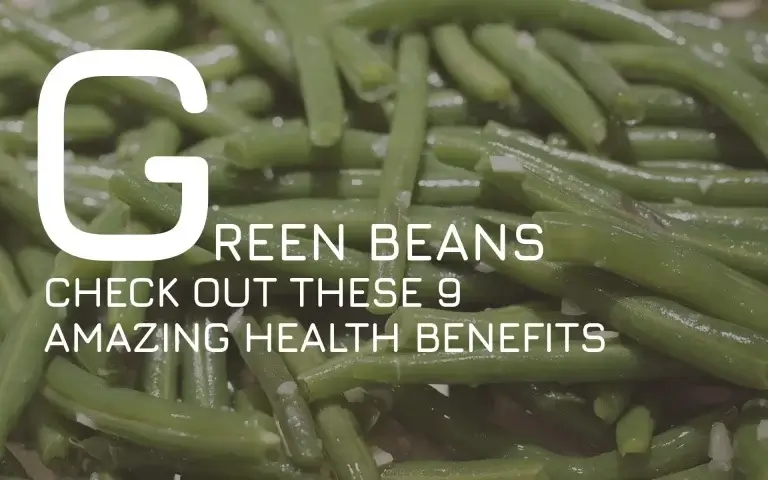11 Health Benefits of Tomatoes for a better life
The health benefits of tomatoes are many. Tomatoes are a popular fruit that is often used in salads, sauces, and as a garnish. Although technically a fruit, tomatoes are considered a vegetable in many parts of the world. Tomatoes are packed with nutrients and offer a range of health benefits. They are an excellent source of vitamins A and C, and they also contain lycopene, a powerful antioxidant.
Studies have shown that lycopene may help to protect against heart disease and certain types of cancer. Tomatoes are low in calories and high in fiber, making them a great food for weight loss. They also contain potassium, which is essential for maintaining healthy blood pressure levels. Including tomatoes in your diet is a great way to improve your overall health.
What is a tomato?
Tomato is the edible, often red, fruit of the plant Solanum lycopersicum, commonly known as a tomato plant. The species originated in Central and South America. The plants typically grow to 1–3 meters (3–10 ft) in height and have a weak stem that often sprawls over the ground and vine-like roots. They are fast-growing and produce new growth even in cooler climates. Tomato plants are perennial vines, meaning they live for more than two years, but the majority of commercially grown varieties are annuals, concluding their life cycle within one year.

Fruits are borne on the fourth or fifth leaf from the main stem on trusses that can support up to eight fruits per node. Most tomatoes grown commercially are eaten as raw fruits. However, some varieties are better suited for canning or other processing, while others are grown mainly for drying or as ornamentals. Some ornamental varieties have fruit that is unpalatable to humans but attractive to birds. A green unripe tomato is rich in chloroplasts and carotenoids, providing high levels of provitamin A.
Fruit or vegetable?
The tomato has long been a subject of debate. Is it a fruit or a vegetable? The answer, it turns out, is both. Botanically speaking, a fruit is the ripened ovary of a flowering plant, containing seeds that will grow into new plants. By this definition, tomatoes are definitely fruits.
However, the U.S. Supreme Court ruled in 1893 that tomatoes should be classified as vegetables for the purposes of taxation since they are typically used as ingredients in savory dishes rather than sweets. So technically, tomatoes are both fruits and vegetables. However you choose to classify them, there’s no doubt that tomatoes are delicious and versatile foods that can add flavor and nutrition to any meal.
Tomato nutrition facts
Tomatoes are a rich source of vitamins A and C, as well as potassium. They also contain lycopene, an antioxidant that has been linked to reduced risk of heart disease and some types of cancer. Tomatoes can be enjoyed in many different ways, from fresh in salads to cooked in sauces. While the nutritional value of tomatoes varies depending on how they are prepared, they are always a good source of nutrients.
100 grams of tomato contain the following nutrients:
- 31 calories
- 5.5 grams carbohydrates
- 0.6 grams fat
- 0.8 grams protein
- 2.1 grams fiber
- 27.2 milligrams Vitamin C (34% of RDI)
- 260 milligrams potassium (7% of RDI)
- 0.1 milligrams Vitamin B6 (7% of RDI)
- 1 milligram vitamin E (7% of RDI)
- 0.1 milligrams Vitamin B2 – riboflavin (6% of RDI)
- 10 micrograms Vitamin B9 – folate (5% of RDI)
- 0.08 milligram Vitamin B1 – thiamin (4% of RDI)
- 0.8 milligrams Vitamin B3 – niacin (4% of RDI)
- 0.1 milligrams manganese (3% of RDI)
- 28 milligrams phosphorus (3% of RDI)
- 12 milligrams magnesium (2% of RDI)
- 0.2 milligrams zinc (2% of RDI)
- 11 milligrams calcium (1% of RDI)
- 0.06 milligrams copper (1% of RDI)
- 6 milligrams Sodium (>1% of RDI)
- 0.3 milligrams iron (>1% of RDI)
- 49 micrograms Carotene, beta
Health Benefits of Tomatoes
Tomatoes are not only a delicious addition to a wide variety of dishes, but they also offer a number of health benefits. For instance, tomatoes are an excellent source of antioxidants, which can help to protect cells from damage caused by free radicals. They are also a good source of Vitamin C, which helps to boost the immune system. In addition, tomatoes contain lycopene, a substance that has been shown to reduce the risk of certain types of cancer. Furthermore, research suggests that eating tomatoes may also help to reduce the risk of heart disease.
1. Contains antioxidants that fight cancer
Tomato is an excellent source of antioxidants, which are substances that help protect cells from damage. These nutrients include lycopene, beta-carotene, and vitamin C. Studies have shown that people who eat foods high in antioxidants may have a lower risk of some chronic diseases, such as heart disease and cancer. Tomato is especially rich in lycopene, a type of antioxidant that gives the fruit its red color and it is found in the highest concentrations in cooked tomatoes, such as those used in pasta sauce or pizza sauce.
Lycopene is a powerful antioxidant that has been shown to have protective effects against a variety of cancers. It is believed to work by preventing the formation of cancer-causing compounds, as well as by inhibiting the growth of cancer cells. Studies have found that lycopene may help to protect against prostate cancer.
In addition, phenolic acids found in tomatoes have been shown to fight lung cancer. Researchers believe that these compounds work by inhibiting the growth of cancer cells and by boosting the immune system.
2. It has anti-inflammatory effect
Tomato contains an antioxidant called lycopene, which has been shown to inhibit the production of inflammatory compounds. Additionally, lycopene is thought to help protect cells from damage caused by inflammation.
They also contain phytofluene and phytoene that have been shown to reduce inflammation in the body, making them an effective treatment for conditions like arthritis, asthma, heart disease, diabetes, and cognitive decline. Additionally, tomatoes are rich in zeta-carotene, which is a powerful antioxidant that helps to protect cells from damage.
3. Improves Heart Health and reduces cholesterol
Tomato is an excellent source of the antioxidant lycopene, which has been shown to help improve heart health. Studies have shown that people who consume foods high in lycopene are less likely to develop heart disease.
Additionally, the antioxidants in tomato can help to reduce LDL (“bad”) cholesterol and prevent the formation of plaque in the arteries. Tomato also contains a compound called carotenoid, which has been shown to protect against strokes. Carotenoid is a type of antioxidant that helps to neutralize free radicals in the body. Free radicals are unstable molecules that can damage cells and lead to inflammation. In addition, carotenoids have been shown to lower blood pressure and improve blood vessel function.
Lutein is a nutrient found in tomatoes that has been shown to improve heart health. Studies have shown that lutein can help to prevent the thickening of the arteries, which can lead to heart attacks and strokes. Lutein is also known to protect against damage caused by free radicals, making it an important part of any diet.
4. It helps to maintain good vision and eye health
Tomatoes are a good source of lutein, a nutrient that helps protect the eye’s retina from damage and prevents macular degeneration, a condition that can lead to blindness. Studies have shown that people who eat lutein-rich foods are less likely to develop cataracts, a condition that causes the lens of the eye to become cloudy and unfocused.
5. It is beneficial for skin health
The biggest benefit comes from the high concentration of lycopene, which is a powerful antioxidant. Antioxidants help to protect the skin from damage caused by free radicals, which can lead to premature aging and a number of other skin problems.
Tomatoes also contain a significant amount of Vitamin C, which is another important nutrient for healthy skin. Vitamin C helps to boost collagen production, keeping the skin firm and elastic.
In addition, they contain lutein which is thought to be beneficial for the skin. The antioxidant properties of lutein help to protect the skin from damage caused by free radicals and ultraviolet light. Additionally, lutein has been shown to promote wound healing and reduce inflammation.
6. Protects bone health and prevents osteoporosis
They contain lycopene, which is a powerful antioxidant that helps to reduce inflammation and scavenge free radicals. Free radicals are damaging molecules that can contribute to the development of osteoporosis. In addition, tomato also contains vitamin C, which is essential for the production of collagen. Collagen is a protein that helps to keep bones strong and healthy. Furthermore, tomato also contains potassium, which is necessary for maintaining bone density. Thus, consuming tomatoes can help to protect bone health and prevent the development of osteoporosis.
7. Helps with asthma
The protective effect of tomatoes is likely due to their high content of lycopene, lutein and zeaxanthin – antioxidants that have been shown to help fight the toxins from tobacco smoke. Scientists believe these nutrients may help to reduce inflammation in the airways, which is a key feature of asthma.
Previous studies have linked asthma to a diet high in processed meats and low in fruits and vegetables. This latest study suggests that increasing your intake of certain fruits, such as tomatoes, may help to reduce your risk.
8. Boosts the immune system
They are a rich source of vitamins and minerals, including vitamin C, potassium, and lycopene. These nutrients are essential for maintaining a strong immune system. Vitamin C helps to stimulate the production of white blood cells, which are key to fighting infection. Potassium helps to regulate blood pressure and fluid levels in the body.
Lycopene is a powerful antioxidant that helps to protect cells from damage. Studies have shown that people who eat tomatoes regularly(high tomato consumption) have a lower risk of developing chronic diseases such as heart disease and cancer. Furthermore, tomatoes contain compounds that may help to reduce inflammation. These findings suggest that tomatoes may help to boost immunity and protect against illness.
9. Helps in digestion
Tomatoes are a delicious and nutritious addition to any diet, but they may also have some benefits for digestion. Tomatoes are a good source of fiber, which helps to keep the digestive system moving and can prevent constipation. In addition, they contain high levels of acidity, which can help to break down food and make it easier to digest.
Additionally, tomatoes are a good source of water, and staying hydrated is essential for maintaining a healthy digestive system. Finally, tomatoes are rich in antioxidants, which can help to protect the digestive system from damage.
10. Helps to prevent gallstones
Adding tomatoes to your diet is one simple way to potentially reduce your risk of developing gallstones. They are small, hard deposits that form in the gallbladder, a small organ located just below the liver. These stones can cause pain and other symptoms, and in some cases may need to be removed surgically. While there is no sure way to prevent gallstones, there are some lifestyle changes that may reduce your risk.
For example, eating a healthy diet that includes plenty of fruits, vegetables, and whole grains can help maintain a healthy weight, which is thought to be one of the key factors in reducing gallstone risk. Additionally, getting regular exercise and avoiding crash diets or other extreme weight-loss measures may also help to reduce your risk. While there is no guarantee that these steps will prevent gallstones entirely, they may help to lower your chances of developing this condition.
11. Helps to control diabetes
They are an excellent source of vitamins A and C, and they also contain lycopene, a powerful antioxidant. Some research suggests that tomatoes may also help to control diabetes. Lycopene may help to control diabetes by improving insulin sensitivity.
Uses in Traditional Medicine
The tomato has a long and storied history in traditional medicine. They were used for a variety of purposes, including detoxification, liver stimulation, and increasing energy levels. In traditional Chinese medicine, tomatoes were often prescribed as a way to support the kidneys and reduce the risk of cardiovascular diseases.
For centuries, tomato juice has been recommended as a way to keep the bloodstream alkaline and help boost resistance to diseases. Tomatoes are also a traditional remedy for digestive issues such as dysentery, diarrhea and dyspepsia. A combination of tomato, garlic and lime juice was traditionally consumed to reduce dysentery.
Furthermore, because tomato nutrition is high in vitamin C, it was used for scurvy prevention. In addition, tomatoes are thought to aid in hydration and heatstroke prevention during the summer months.
In Ayurvedic medicine, tomatoes were used to support skin cell replacement. While modern science has not yet corroborated all of the traditional uses for tomatoes, there is some evidence to suggest that they may have potential health benefits.
How to Buy and Use Tomatoes
Tomatoes are one of the most popular vegetables in the world and for good reason. They are versatile, nutritious, and easy to grow. However, there are a few things to keep in mind when purchasing tomatoes. First, make sure to buy from a reputable source. Second, look for organic tomatoes that are uniform in size and shape. Third, check for blemishes or cracks. Finally, select tomatoes that are firm but not hard.
Recipes
Tomatoes are a versatile fruit that can be used in a wide variety of recipes. Fresh tomatoes can be enjoyed as is, or they can be used in salads, sandwiches, pasta dishes, and more. For a quick and easy snack, try slicing up a tomato and adding some salt and pepper. Or, for something heartier, try one of these recipes.
Tomato and Basil Pizza: This classic combination is always a hit. Simply top your favorite pizza dough with tomato sauce, shredded mozzarella, and fresh basil leaves. Bake at 400 degrees Fahrenheit(200degrees Celsius) until the crust is golden brown and the cheese is bubbly.

Tomato Salad with Balsamic Vinaigrette: This light and refreshing salad is perfect for a summer picnic. Start with a bed of greens, then add diced tomatoes, sliced cucumbers, and crumbled feta cheese. Drizzle with a simple balsamic vinaigrette, and you’re good to go.
Roasted Tomato Soup: This rich and flavorful soup is perfect for a chilly day. Roast tomatoes, garlic, and onions in the oven until they’re soft and slightly charred. Then blend them into a smooth soup, and season to taste with salt, pepper, and your favorite herbs. Serve hot, topped with a dollop of sour cream or grilled cheese croutons.

Tomatoes in chili: Start by browning ground beef in a large pot. Then add chopped onions, diced tomatoes, kidney beans, chili powder, and cumin. Let the chili simmer for 30 minutes or longer, then garnish with shredded cheese and sour cream before serving.
Tomato sauce: This staple can be used in a variety of dishes, from pasta and pizza to chicken and fish. To make tomato sauce, simply cook diced tomatoes down into a thick paste, then add garlic, salt, pepper, and your favorite herbs. For a more complex flavor profile, try adding sautéed onions or mushrooms.
Tomato paste: Tomato paste is a concentrated form of tomato sauce that can be used to add flavor and body to soups, stews, and sauces. It’s also a great way to add tomato flavor to dishes without adding too much liquid. To make tomato paste, cook diced tomatoes over low heat until they’re very soft. Then press them through a strainer or food mill to remove the skins and seeds. Finally, cook the tomato pulp down until it’s thick and paste-like. You may also use olive oil to keep it for a longer period.
Tomato Juice
It is a popular beverage made from the juice of ripe tomatoes. It is usually seasoned with salt and pepper, and some people also add sugar or other sweeteners. It is a good source of vitamins A and C, as well as lycopene, an antioxidant that has been linked to various health benefits.
While many people enjoy drinking tomato juice on its own, it is also commonly used as an ingredient in cocktails such as the Bloody Mary. It can also be used for cooking, and it is a popular choice for making soup or sauce. Whether you enjoy it on its own or use it as a base for another dish, it is a versatile and delicious option.
Risks and Side Effects
Tomatoes are a delicious and healthy addition to any diet, but it’s important to be aware of their potential side effects. Tomatoes belong to the nightshade family of plants, which also includes potatoes, peppers, and eggplants. For some people, nightshade vegetables can cause digestive issues or aggravate conditions like arthritis or autoimmune diseases. Additionally, tomatoes are one of the most common allergies when it comes to fruits and vegetables. If you experience any adverse effects after eating tomatoes, it’s best to consult with a doctor or allergist.
Tomatoes are acidic, and as such, they are often avoided by those with reflux disorders or GERD. If you have acid reflux symptoms or stomach, joint or muscle pain, you may want to try eliminating tomatoes from your diet to see if your symptoms improve. You might also try an elimination diet, which eliminates all nightshade vegetables, including tomatoes. If you’re suffering from any digestive problems that may be linked to a food sensitivity, elimination diets can help you find the source of your sickness.
Final thoughts
Tomatoes are an excellent source of many nutrients, including vitamins A and C, potassium, and fiber. They also contain lycopene, a powerful antioxidant that has been linked to a reduced risk of heart disease and cancer. Thanks to their versatility and exceptional nutrient profile, tomatoes can be enjoyed in a variety of ways and offer considerable health benefits. So the next time you’re looking for a nutritious snack or addition to your meal, don’t forget the tomato.
FAQs
By NutriWins team










